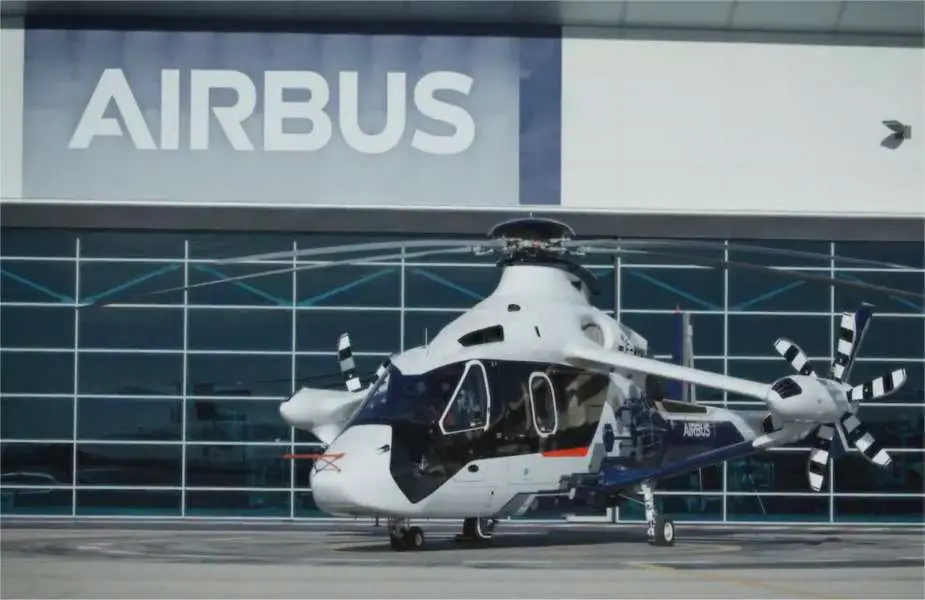Airbus Launches First Racer Flight High-Speed Helicopter
On April 26, 2024, Airbus Helicopters achieved an important step in European aviation with the first successful flight of its Racer demonstrator, a high-speed rotorcraft being developed under the EU’s Clean Sky 2 research initiative. The flight marks the beginning of a detailed flight campaign aimed at pushing the boundaries of rotorcraft performance.
Follow Army Recognition on Google News at this link

Airbus Racer (Rapid And Cost-Effective Rotorcraft) High-Speed Helicopter (Picture source: Airbus Helicopter)
The Racer, an acronym for "Rapid And Cost-Effective Rotorcraft," builds on the technological foundations laid by Airbus's earlier X3 demonstrator. It integrates fixed wings for lift, lateral propellers for propulsion, and a main rotor for vertical take-off and landing capabilities, achieving a projected cruise speed of around 400 km/h. The design focuses on achieving optimal efficiency in terms of cost, speed, sustainability, and mission capability.
This initiative is part of the broader Clean Sky 2 program, a major European research undertaking co-financed by the European Commission and leading aerospace industry players, with a total budget of €4 billion over seven years (2017-2024). Clean Sky 2 seeks to reduce the environmental footprint of aviation, focusing on cutting CO2 emissions, noise levels, and fuel consumption.
The Racer is expected to be used in missions where rapid transit is crucial, including emergency medical services, search and rescue operations, and efficient passenger transport in sectors like oil and gas and corporate travel.
Significant dates in the Racer’s development include completion of wind tunnel tests in 2016, design reviews between 2017 and 2018, prototype assembly in 2019, and the commencement of flight tests in 2020.
The Clean Sky program has already demonstrated significant advancements in aeronautical technology, such as improvements in fuel efficiency and noise reduction, and is anticipated to influence future generations of aircraft starting in 2025.
- Hits: 3533
















